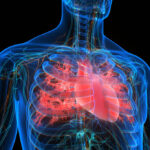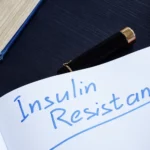- Home
- Who We Are
- Shop
- Products
- GlycoCheck
- The Science
- Study: Improving Aortic Aging with Endocalyx Pro
- Improve Vascular Health with This Supplement
- Promising Supplement for Kidney Health
- Inositol & Insulin Resistance
- PEMF Therapy Benefits
- Maximizing Mediterranean Diet Benefits
- Glycocalyx (eGC): What is Endothelial Glycocalyx?
- 9 Tips for a Healthy Aging Lifestyle
- More Science….
- News & Events
- Join
- Login

Sex-related associations of high-density lipoprotein cholesterol with aortic stiffness and endothelial glycocalyx integrity in treated hypertensive patients
Abstract
Smoking, a well-recognized major cardiovascular (CV) risk factor, impairs endothelial function and increases aortic stiffness which indicates subclinical organ damage in hypertensive patients. Loss of endothelial glycocalyx (EG) integrity, as part of the endothelium, represents endothelial dysfunction. The authors aimed to investigate the role of increased HDL cholesterol levels (HDL-C), which usually are considered protective against CV disease, in aortic stiffness and endothelial integrity in middle-aged treated hypertensive patients regarding smoking habit. The authors studied 193 treated hypertensive patients ≥40 years (mean age = 61±11 years, 58% females), divided in four groups regarding sex and smoking. Increased perfusion boundary region of the 5-9 μm diameter sublingual arterial microvessels (PBR5-9) was measured as a noninvasive accurate index of reduced EG thickness. Aortic stiffness was estimated by carotid-femoral pulse wave velocity (PWV). In the whole population, an inverse weak relationship was found between HDL-C and PWV (r = −.15, P = .03) and PBR5-9 (ρ = −.15, P = .03). Moreover, HDL-C was negatively related to PBR5-9 in males (r = −.29, P = .008) either smokers (r = −.35, P < .05) or non-smokers (r = −.27, P < .05) and PWV in female non-smokers (r = −.28, P = .009). In a multiple linear regression analysis, using age, weight, smoking, HDL-C, and LDL-C as independent variables, we found that HDL-C independently predicts PWV in the whole population (β = −.14, P = .02) and PBR5-9 in male hypertensive patients (β = −.28, P = .01). Higher HDL-C levels are associated with reduced aortic stiffness in hypertensive patients, while they protect EG and subsequently endothelial function in middle-aged, treated hypertensive male patients (either smokers or not).
Science Articles
Quick Navigation
Contact Info
NuLife Sciences, Inc.
7407 Ziegler Rd
Chattanooga, TN 37421
(800) 398-9842




